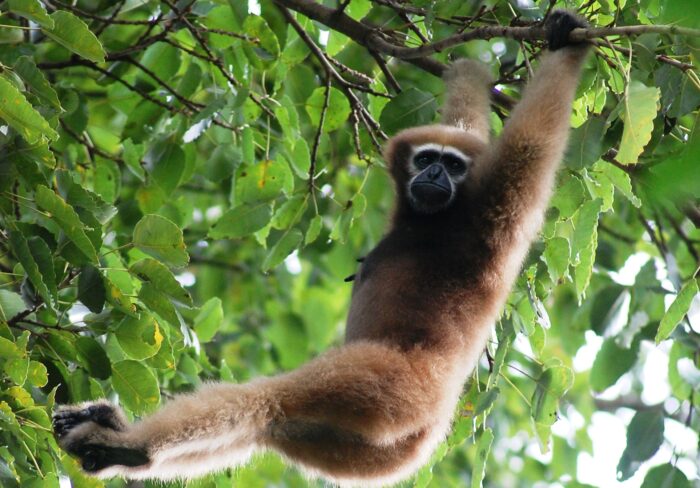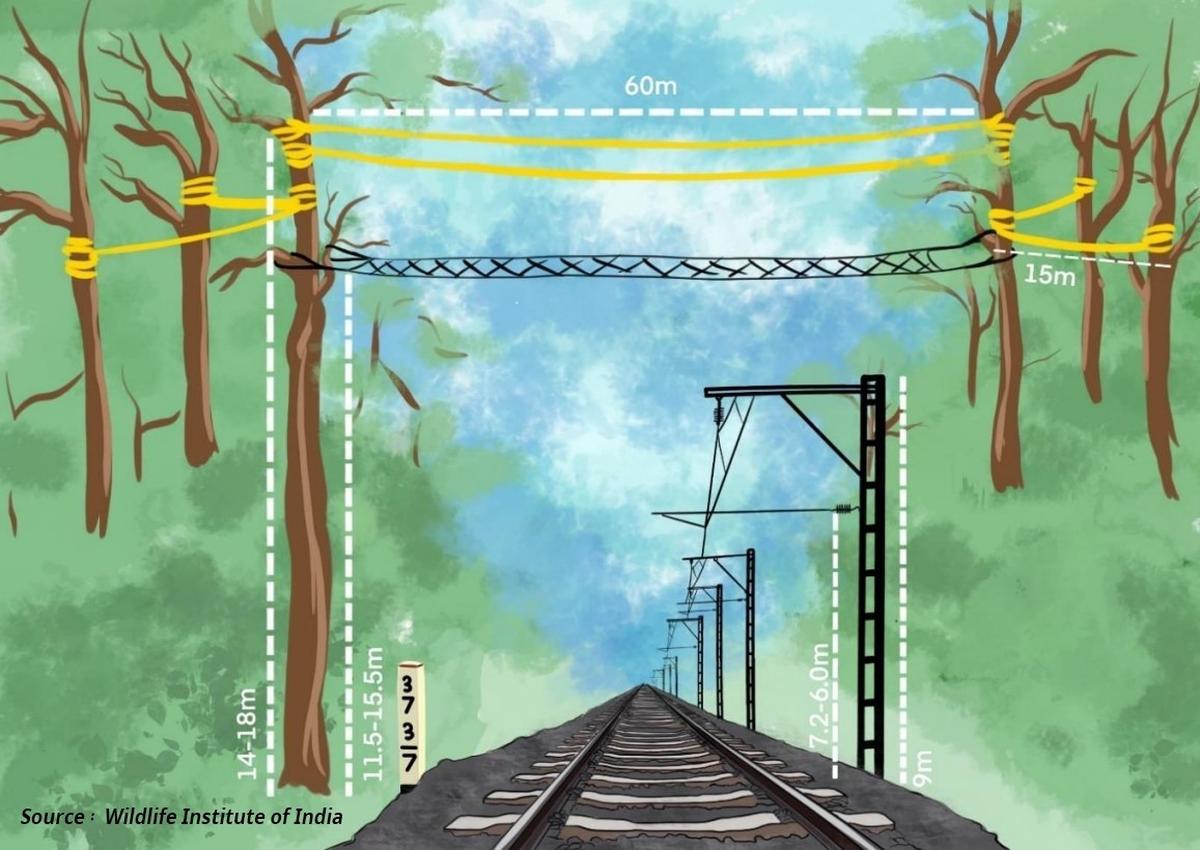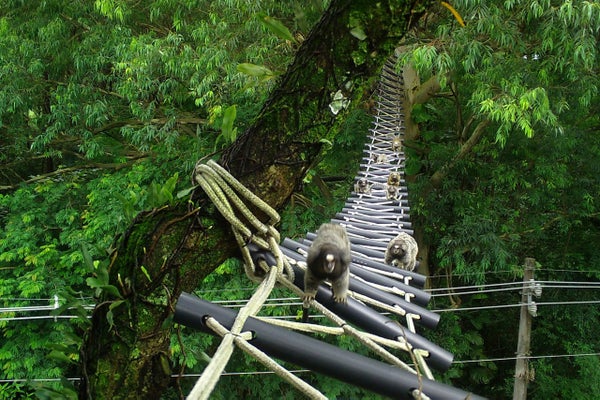Gibbons
Gibbons

-
- Gibbons are a group of small to medium-sized apes. They are the smallest and fastest of all apes.
- Ape is a primate (an order of mammals) that lacks a tail, including the gorilla, chimpanzees, orangutan, and gibbons.
- Gibbons are a group of small to medium-sized apes. They are the smallest and fastest of all apes.
- Gibbons are also called lesser apes, owing to their small sizes.
- There are 20 species of Gibbons in the world.
- Gibbons are found in evergreen tropical rainforests of Southeast Asia, including countries like Thailand, Indonesia, Malaysia, Laos, and Vietnam.
- Unlike some other primates, gibbons lack a tail.
- Gibbons are known for their energetic vocal displays. They are omnivorous in their diet and are arboreal creatures(tree-dwelling).
Types of Gibbons Found in India
- Hoolock gibbons are the only apes found in India. They were divided into two species: the Western Hoolock Gibbon and the Eastern Hoolock Gibbon.
- Western Hoolock Gibbon: It is found in the northeastern states of India, including Assam, Arunachal Pradesh, and Meghalaya. Western Hoolock gibbons have a white or pale browband, distinguishing them from Eastern Hoolock gibbons.
- Eastern Hoolock Gibbon: Also found in northeastern India, particularly in Arunachal Pradesh and Nagaland. Eastern Hoolock gibbons have a distinct dark browband.
- Until 2021 there were two known species of Gibbon, however a study conducted by the Centre for Cellular and Molecular Biology (CCMB) in Hyderabad could not find any genetic differences between the two gibbons which were earlier differentiated based on skin coat colour.
- This study revealed that there is only one species of Hoolock Gibbon in India
Threats
- Habitat Loss and Fragmentation: One of the primary threats to gibbons is habitat loss due to deforestation, agriculture, logging, and urban expansion.
- Illegal Wildlife Trade: Gibbons are sometimes captured and sold for their body parts, which are used in traditional medicine or for ornamental purposes.
- Infrastructure Development: The construction of roads, dams, and other infrastructure projects can fragment gibbon habitats, disrupt their movement patterns, and increase the risk of accidental deaths due to collisions with vehicles.
Conservation status
- Western hoolock gibbon is classified as endangered and the eastern hoolock gibbon as vulnerable as per the IUCN Red list
- Hoolock gibbons are protected under Schedule I of the Wildlife Protection Act 2022.
Why in news?
-
- As railway lines are going to be laid through the Hollongapar gibbon sanctuary, Canopy bridges will be constructed on top of railway tracks for gibbons to move across regions in the sanctuary with ease.
- Canopy bridges refer to artificial and natural crossing structures, built across roads and railway tracks to enable arboreal animals to traverse with ease. Refer to the image provided below.


About Hollongapar Gibbon Sanctuary
-
- It is located in Jorhat district of Assam.
- It is dominated by Hollong trees, Nahar trees and evergreen shrubs and herbs.
-
- It is the largest habitat for Hoolock Gibbon. Other species such as northern pig-tailed macaque, eastern Assamese macaque, stump-tailed macaque, Bengal slow loris, porcupine, jungle cat, large Indian civet, etc are found here.
- Bhogdoi River flows through the Sanctuary.
Sources
Subscribe
Login
0 Comments
